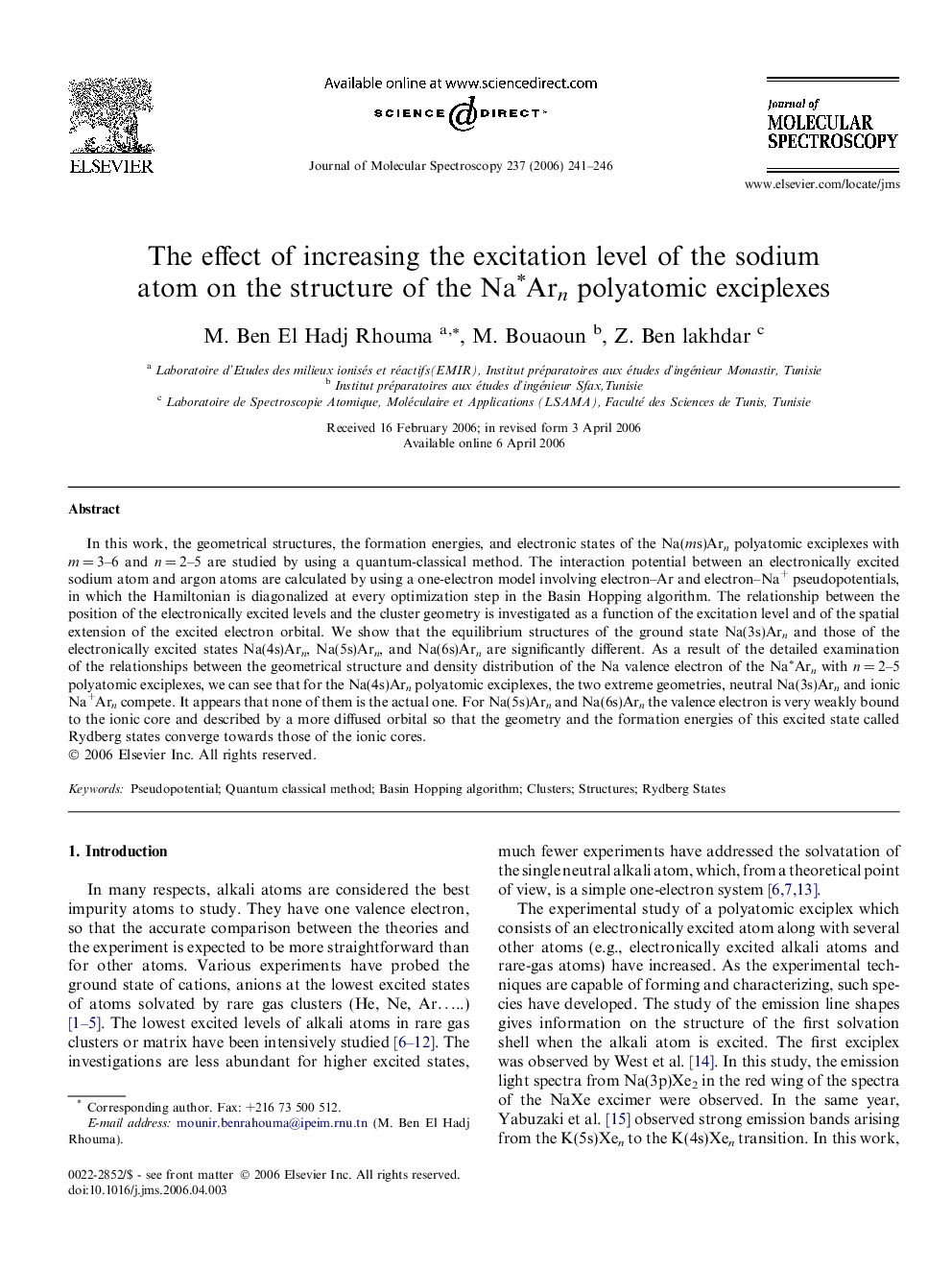| Article ID | Journal | Published Year | Pages | File Type |
|---|---|---|---|---|
| 5416173 | Journal of Molecular Spectroscopy | 2006 | 6 Pages |
Abstract
In this work, the geometrical structures, the formation energies, and electronic states of the Na(ms)Arn polyatomic exciplexes with m = 3-6 and n = 2-5 are studied by using a quantum-classical method. The interaction potential between an electronically excited sodium atom and argon atoms are calculated by using a one-electron model involving electron-Ar and electron-Na+ pseudopotentials, in which the Hamiltonian is diagonalized at every optimization step in the Basin Hopping algorithm. The relationship between the position of the electronically excited levels and the cluster geometry is investigated as a function of the excitation level and of the spatial extension of the excited electron orbital. We show that the equilibrium structures of the ground state Na(3s)Arn and those of the electronically excited states Na(4s)Arn, Na(5s)Arn, and Na(6s)Arn are significantly different. As a result of the detailed examination of the relationships between the geometrical structure and density distribution of the Na valence electron of the NaâArn with n = 2-5 polyatomic exciplexes, we can see that for the Na(4s)Arn polyatomic exciplexes, the two extreme geometries, neutral Na(3s)Arn and ionic Na+Arn compete. It appears that none of them is the actual one. For Na(5s)Arn and Na(6s)Arn the valence electron is very weakly bound to the ionic core and described by a more diffused orbital so that the geometry and the formation energies of this excited state called Rydberg states converge towards those of the ionic cores.
Related Topics
Physical Sciences and Engineering
Chemistry
Physical and Theoretical Chemistry
Authors
M. Ben El Hadj Rhouma, M. Bouaoun, Z. Ben lakhdar,
